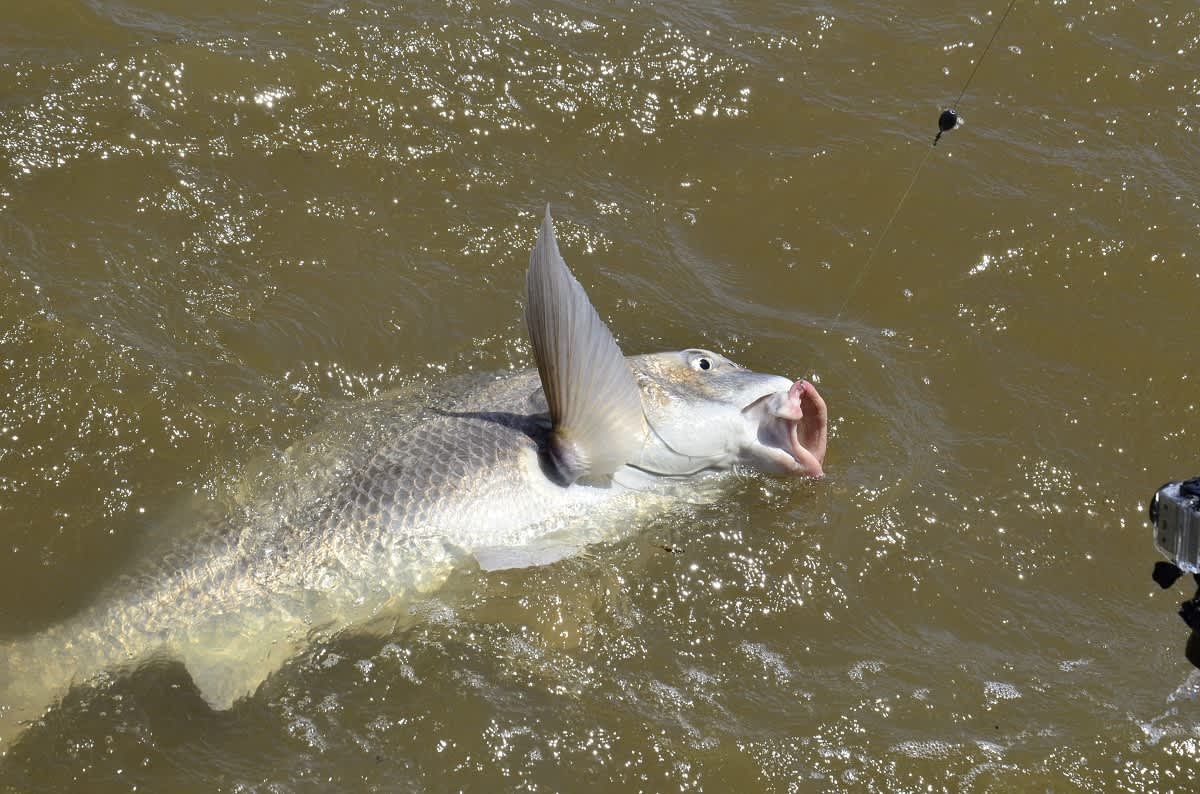Beating the Drum in Bad Weather Along the Upper Gulf Coast
John E. Phillips 12.15.14

The wind had been blowing for three days when I arrived in Biloxi, Mississippi, to go inshore fishing with Captain Sonny Schindler of Shore Thing Charters one winter. The water in Bay St. Louis looked like a melted Milky Way candy bar. Even though the wind had died down, the fishing conditions on the surface appeared to be horrible at best.
When I met Schindler at the dock, I told him, “I guess this weather has blown our fishing trip.” I expected Schindler to say, “Yes, we’ll just can the trip.” But with a smile on his face, he answered, “Get your stuff, John. We’re going to go catch some big ones.” And big ones we caught—black drums bigger than some grouper, as well as slot reds and much more.
“In the past, black drum have been an incidental catch when we’ve been fishing for speckled trout and redfish,” Schindler explained. “But on bad-weather days, we’ve learned to target the black drum. They fight hard, they’re great picture fish, and anglers can have so much fun catching these black giants that they never may have seen before. Small black drum are delicious to eat. The fish we commonly call redfish is really a red drum. So, the black drum is just a redfish wearing a black raincoat.”
The best places to catch red and black drum are around artificial reefs, oyster bars, bridges, and pilings. The black drums eat crabs, barnacles, and shellfish. Occasionally, they eat small bait fish as well as shrimp. Their primary diet seems to be crab and shrimp. The diet of the black drums means they’re delicious. To catch trophy giant black drum, Schindler suggests fishing with fresh cracked crabs. For eating size black drum, fresh dead shrimp seems to be the most productive. The good news is that black drum and red drum hold in the same areas and eat the same baits.
“We can have a great day of fishing for redfish out of bad weather in the winter at the Biloxi Marsh, which is only a 10-mile run from Bay St. Louis,” Schindler said. “The Biloxi Marsh consistently produces some of the best redfish angling on the planet. If the water is clear in the marsh, which it often is, we can cast to schools of redfish swimming in 12 to 18 inches of water right against the shoreline. During the cooler months, those redfish will eat almost anything you cast in front of them. The biggest black drum we’ve ever landed on my boat weighed 55 pounds, but we catch 20- and 30-pounders regularly.”
Another fish that’s a great sportfish and delicious to eat is the sheepshead. Colored like a zebra with black stripes on silver sides, the sheepshead is caught in the same regions and on the same baits as the black drum and the redfish. Fishing for these species is good all winter long on the Upper Gulf Coast from Florida to Texas.
“We really encourage anglers to catch, take pictures of, and then release the very big black drum and redfish,” Schindler emphasized, “because fish of that size can be between 30 and 40 years old, which is older than I am. These big fish are the baby makers and help to ensure that the Upper Gulf Coast will have drum well into the future. Too, they’re not as tasty on the platter as the redfish and black drum weighing 8 pounds or less.”
To dodge the snow and ice, have a great day of fishing, and go home with tasty fresh fish to eat, plan a trip to the warm shores of the Upper Gulf of Mexico. Biloxi and Bay St. Louis, Mississippi, have an average of 350 frost-free days per year.
To learn more about warm weather, wintertime fishing, contact Shore Thing Charters at 228-342-2206, or go to www.shorethingcharters.com.

